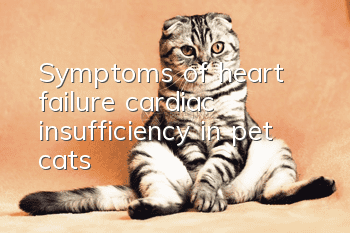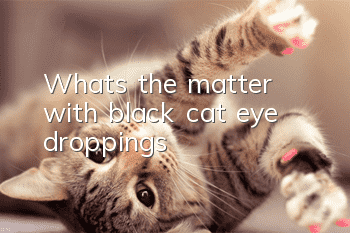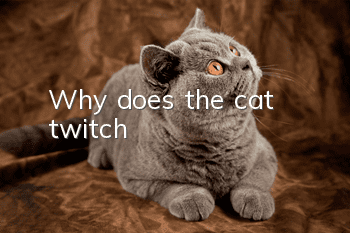Symptoms of heart failure (cardiac insufficiency) in pet cats

Feline heart failure is also called cardiac insufficiency. It is not an independent disease. It often occurs secondary to the occurrence of other diseases. It is caused by the weakening of myocardial contractile function, resulting in reduced cardiac blood output, insufficient tissue perfusion, and venous reflux. A syndrome characterized by obstruction, edema, dyspnea, cyanosis, and even cardiac arrest and sudden death. According to the course of the disease, it can be divided into acute and chronic types. Chronic heart failure is also called congestive heart failure.
1. Pathogenesis
The cardiovascular system has a strong compensatory capacity. Under normal circumstances, it is enough to complete cardiac output tasks that exceed the normal load of the heart by 5-6 times. Animals that usually lack exercise will suddenly suffer severe exertion or strenuous exercise. The blood demand and venous blood return volume of various tissues and organs of the body have increased sharply. In order to discharge more blood and adapt to the needs of various tissues and organs, the heart must compensate by strengthening myocardial contractility and accelerating myocardial contraction frequency. Relying on strengthening Although myocardial contractility and accelerated myocardial contraction frequency can improve blood circulation to a certain extent in a short period of time, they can also lead to excessive consumption of myocardial reserve energy and aggravate cardiac dysfunction. In particular, the accelerated frequency not only increases myocardial oxygen consumption, but also greatly shortens the ventricular diastolic period, resulting in insufficient ventricular filling and reduced coronary blood flow. The cardiac output not only does not increase but decreases, resulting in cardiac failure due to insufficient compensation. Exhaustion.
Acute heart failure is caused by weakened myocardial contractility, which reduces cardiac output and arterial pressure, which reflexively causes sympathetic nerve excitement and compensatory tachycardia. When the heart rate exceeds a certain limit, ventricular filling is insufficient, coronary blood flow decreases, and cardiac output decreases. Sympathetic nerve excitement causes the adrenal medulla to secrete a large amount of catecholamines (epinephrine, norepinephrine, etc.), causing spasmodic contraction of peripheral blood vessels, increasing ventricular pressure load, leading to cardiac congestion and insufficient renal blood supply, which reflexively causes the adrenal cortex to secrete aldosterone. And the antidiuretic hormone secreted by the hypothalamus-neurohypophysis increases, and the reabsorption of water and sodium ions by the renal tubules increases, causing water and sodium retention, increasing blood volume, aggravating the volume load of the ventricle and venous congestion, making heart failure more serious, and ultimately Acute heart failure occurs due to decompensation.
Congestive heart failure is common in endocardial diseases (bacterial endocarditis, congenital endocardial fibroelastosis), myocardial diseases (feline cardiomyopathy, infective myocarditis), pericardial diseases (coarctation) pericarditis, pericardial tumors), congenital heart defects (atrial or ventricular septal defects, aortic or pulmonary valve stenosis, patent ductus arteriosus, etc.), infections (parvovirus infection, trypanosomiasis, feline infectious peritonitis), Shock, endotoxemia, etc.
2. Symptoms
Congestive heart failure has a chronic course. A sick cat may feel tired after slight exercise or even excitement.Depression, weight loss, pale or cyanotic conjunctiva. Cough and dyspnea occur with pulmonary congestion or pulmonary edema. Some have ascites and subcutaneous edema. Heart examination shows tachycardia, cloudy heart sounds, enhanced first heart sound and weak second heart sound, often loud heart murmur and precordial tremor, arrhythmia, and weak pulse. It can be seen on the electrocardiogram that the duration of the QRS complex is prolonged or the peaks are split due to ventricular enlargement, often accompanied by premature atrial or ventricular contractions, paroxysmal tachycardia, atrial fibrillation and atrioventricular block. X-ray examination often shows changes in cardiac hypertrophy, pulmonary congestion or pleural effusion.
When left heart failure occurs, in addition to the above signs, there are often severe dyspnea, cough, colorless or pink foamy fluid flowing from the nostrils, widespread crackles on chest auscultation and other symptoms of pulmonary congestion and pulmonary edema. .
In right heart failure, in addition to the above signs, there are often clinical signs such as conjunctival cyanosis, superficial venous distention, subcutaneous edema, hepatomegaly, and ascites.
- How to train a cat not to get into bed?
- Why does a female cat still urinate after being neutered?
- What medicine is used for cat folliculitis? How do owners deal with folliculitis?
- What should you pay attention to when raising a hairless cat?
- Does cat’s foot hair need to be trimmed? How to trim cat's feet?
- Why does a cat have soft stools and vomit when changing food?
- What to do if a kitten’s eyes are covered with secretions
- How can pet owners correct cats’ aggressive behavior?
- Precautions for cats during pregnancy
- Will cats get better with depression?



